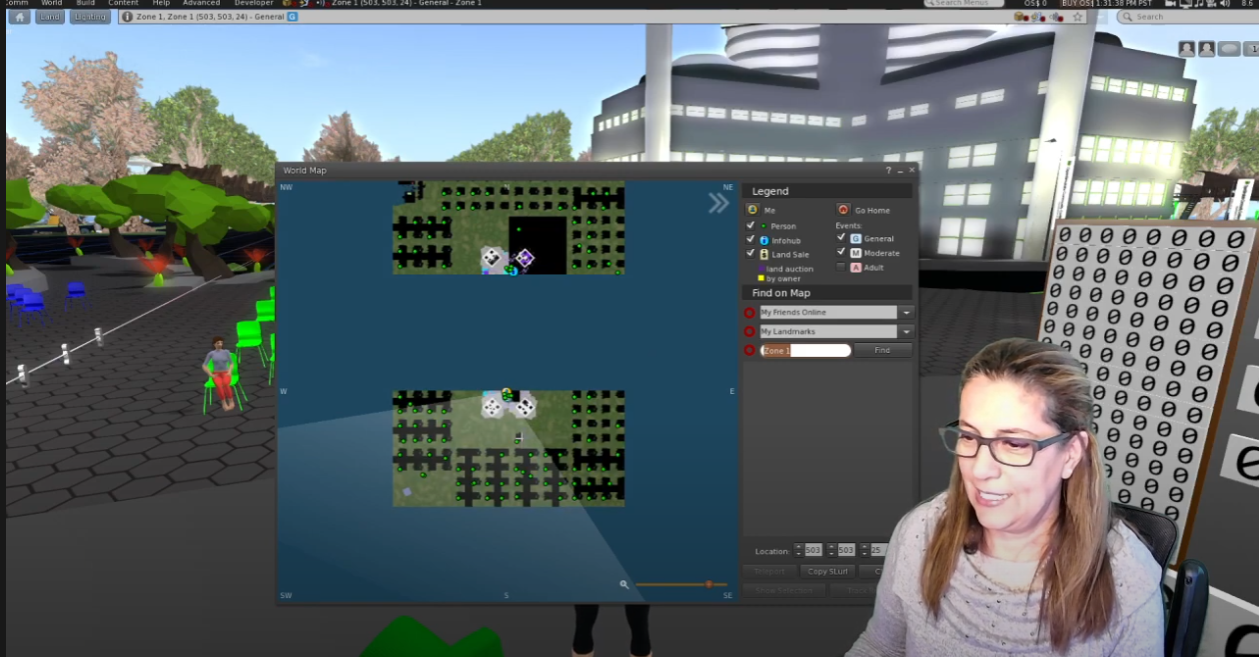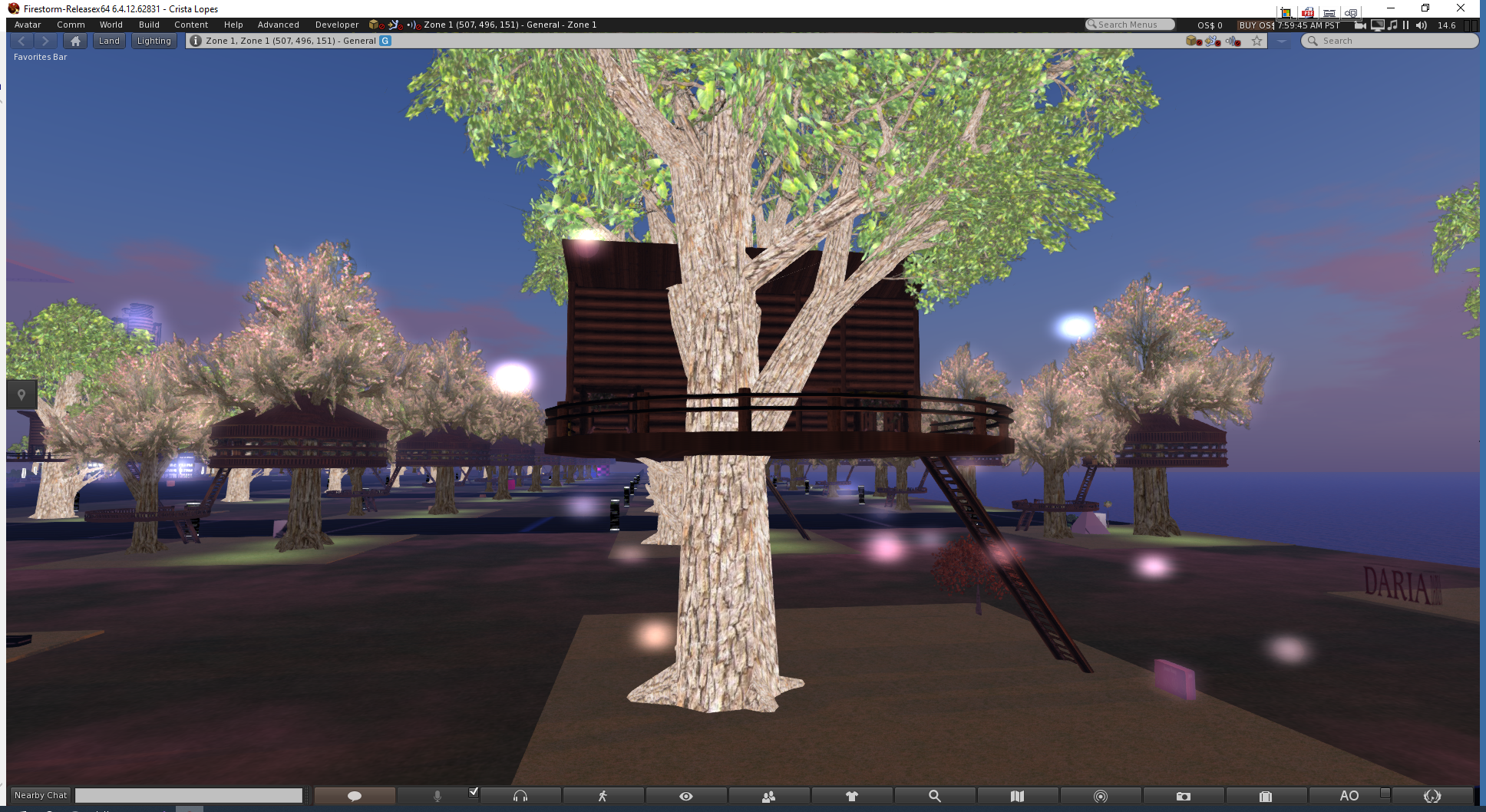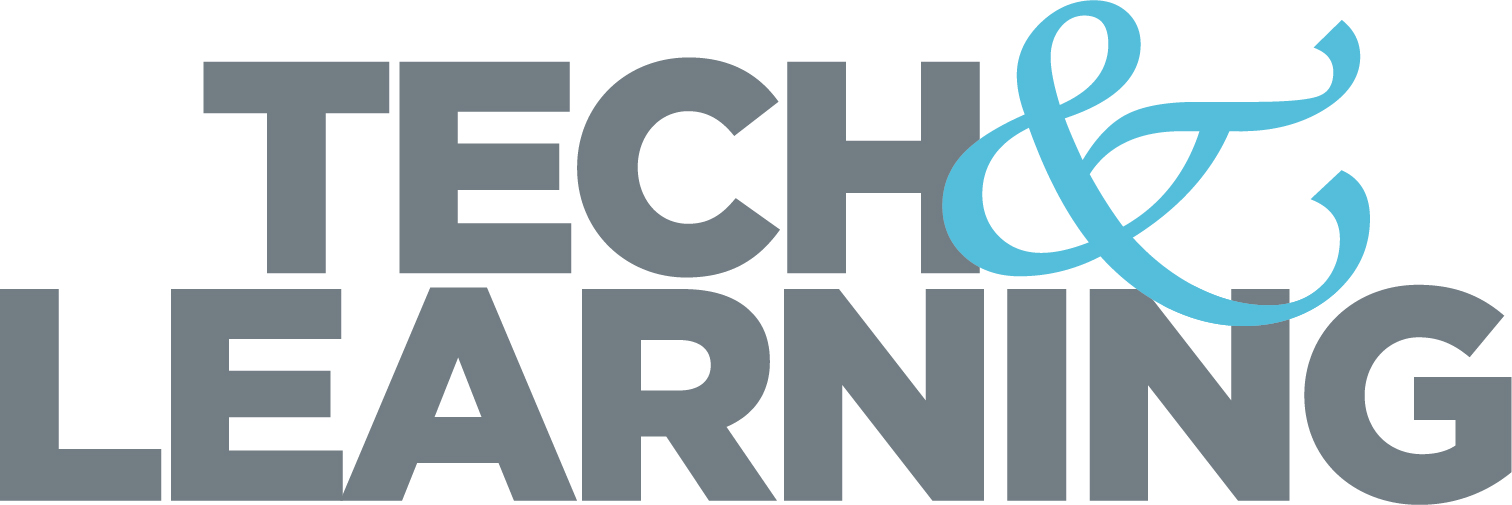Virtual Reality Teaching: Successes and Challenges
Using virtual reality for an introductory computer class taught professor Cristina Lopes a lot about implementing VR for instruction

Part way through the 2020-21 academic year, Cristina Lopes, like so many other educators, was tired of lecturing via video.
“As a professor, the experience of teaching online on Zoom is talking to a black screen, and seeing only yourself, in the little preview,” says Lopes, professor of informatics at University of California, Irvine. “It's like you're talking to yourself.”
But unlike so many other teachers, Lopes had an alternative. More than a decade ago she helped create OpenSimulator, an open source multiplatform, multiuser 3D application server.
Lopes decided at the end of the fall semester that she would use OpenSimulator to create a virtual reality experience for the students in her introductory computer class “How Computers Work.”
Using winter break to prepare, Lopes built the class into an immersive virtual world that hosted every aspect of the course. Lectures were conducted in virtual reality and students had their own treehouse that served as their home in the world. While in the virtual environment, students would collaborate with one another on group projects and interact with immersive simulations.
Virtual Reality: Strengths
Lopes used the visual potential of virtual reality to full effect. “I developed simulations of computers, blown up so that you can actually see what's going on inside,” she says. “You'll see exactly what happens in the registers, in the memory, and the CPU.”
She also created simulations of how information is sent on the internet. For example, students had projects in which they worked with these simulations to learn more about computer hardware. Lopes says this aspect of the class went really well and is something she will work into future classes, even those offered in person.
Tech & Learning Newsletter
Tools and ideas to transform education. Sign up below.
“In introduction to computers, the projects tend to be very abstract because you're not going to put 150 students in a physical lab and give them physical hardware,” she says. “So the alternative to simulations is just completely abstract reading or maybe watching videos. Simulations really bring something super valuable to the table that we didn't have before.”

Virtual Reality: Areas That Could Use Improvement
Lopes lectured within the virtual environment. She appeared on a screen within a large virtual hall. She also streamed these lectures on Twitch. As the semester progressed, more and more students were opting to watch the lectures on Twitch rather than logging into the virtual environment. Eventually, Lopes gave in to student preference and moved the lectures out of the virtual world entirely.
In the future she will likely plan on having the lectures take place outside of the virtual environment. “The projects, the simulated computers, and the simulated internet, that's the part that I think worked really well,” she says. “The lectures, not so much.”
The Future of Virtual Reality in the Classroom
Lopes is scheduled to teach “How Computers Work” in person this fall but plans on incorporating the virtual world into her class so students can learn from the simulations and work with some for projects.
Educators can use OpenSimulator to create their own virtual class experiences. Lopes has posted demos of some of her work online. She is also willing to share a template for the environment she used in her class with those who contact her.
While there is a lot of potential for virtual reality, Lopes believes that for now it is best used strategically. “A virtual reality environment is one of those things that is always so close, but never here. It's been like that for the past 30 years or so,” she says. “The technology is there, but it's a little bit clunky. I think until something radically easier comes along, the right thing to do is to use it as an enhancement of other technologies for teaching.”
Erik Ofgang is a Tech & Learning contributor. A journalist, author and educator, his work has appeared in The New York Times, the Washington Post, the Smithsonian, The Atlantic, and Associated Press. He currently teaches at Western Connecticut State University’s MFA program. While a staff writer at Connecticut Magazine he won a Society of Professional Journalism Award for his education reporting. He is interested in how humans learn and how technology can make that more effective.











